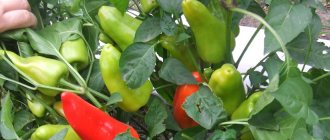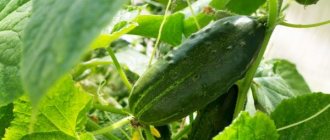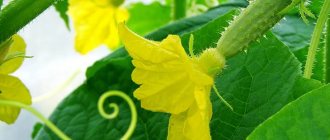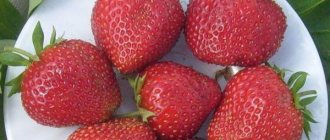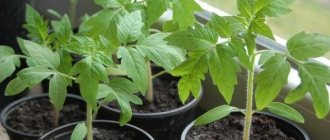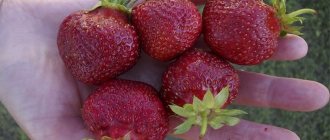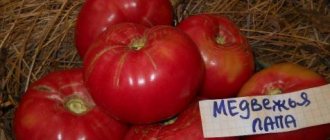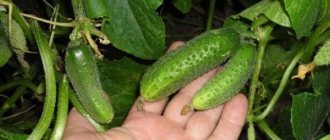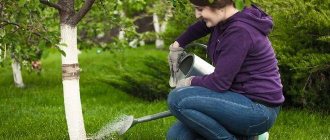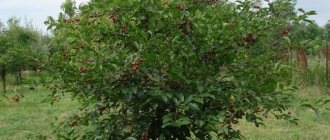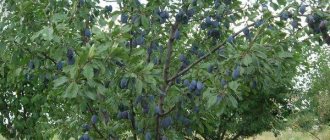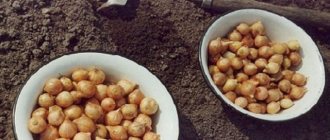Preparing strawberries for winter is not hastily, somehow, after the first frost. It begins in the second half of summer, when the berry picking is completed. Bushes that have devoted all their strength to please the gardener with sweet, fragrant berries need care and attention. This stage is important not only for plant restoration. New buds are being formed. Strawberries are gathering strength for the winter.
Autumn strawberry care is the first steps towards next season's harvest. If the gardener does everything that is required according to the rules of agricultural technology, there will be a harvest in a year. If you are lazy or miss deadlines, there is no one to blame. Moreover, strawberries are a crop that bears fruit in one place for no more than 4-5 years. In order not to provoke premature degradation, they try to complete the entire range of work that completes the cycle.
Rules for caring for strawberries in autumn
Year after year, the gardener learns how to properly prepare strawberries for winter. The principle is the same - the timing and nuances differ. Southerners and Siberians alike prune bushes, fertilize the soil, and protect beds from pests. These are immutable rules for everyone. Whether to water or not depends on the weather. And there is less time in northern latitudes, so the schedule is more dense.
The general list of activities for autumn strawberry care contains the following mandatory items:
- Trimming.
- Weeding.
- Loosening and mulching.
- Watering, including water-charging.
- Feeding.
- Pest control.
- Shelter for the winter.
In the south, this work lasts until the end of October - mid-November. The center is in operation by the end of October. Beyond the Urals and in Siberia, by Intercession Day (mid-October) they are already putting an end to work in the strawberry beds.
Important ! For remontant varieties, all stages of work are as relevant as for ordinary ones. But the timing of care is shifted to the end of the last wave of fruiting.
Pruning strawberries in autumn
Disputes on the topic of pruning are heard less and less often - to mow garden strawberries or to cut them selectively. The first method has fans. Mow down the bushes after fruiting, trying not to touch the heart. Otherwise the bush will wither. But most lovers of the aromatic delicacy approach each bush individually with pruning shears.
Garden strawberries of ordinary varieties finish producing fruit by mid-to-late July. Then the time comes when you need to start preparing strawberries for winter, no matter how early it may seem.
The purpose of this pruning is:
- remove all flower stalks;
- trim old (brown, stained, broken, dried) leaves;
- cut out the mustache (if the task is not to propagate the berries this season).
Minimal pruning is required for young plantings. If the berry bushes are planted in the current season, the leaves are not touched, but the mustache is shortened. Experienced summer residents recommend cutting them not at the root - leaving from 5 to 8 cm. This applies to any variety and age of the plant.
As a result, small bushes with succulent green leaves remain in the garden bed. New shoots will appear from the hearts again. Strawberries will grow before the cold weather, gain strength, and get stronger.
Important ! All shoots and leaves are completely removed only from those bushes where infection is noticed. Fungal spores or bacteria will safely overwinter on plant debris and in leaf axils. And in the spring they will continue to kill strawberries. Therefore, after removing all the greenery, such plants are treated with insecticides, and if mites are found, then with acaricides. This way, pests will have no chance for a successful winter and subsequent harmful activities. But no matter how drastic the autumn haircut may be, you cannot injure your heart.
Pruning stimulates active growth. Whiskers stretch out, leaf blades unfold. What to do with overgrown strawberries in September, when cold weather is just around the corner? Trim again. But not so radical anymore. Autumn pruning is the removal of tendrils and leaves lying on the ground. Such selective pruning will not cause stress, but will allow the berry plantings, after overwintering, to quickly recover from frost.
But this procedure is not carried out casually, but thoroughly and carefully. Using sharp scissors or pruning shears, cut off unnecessary shoots so as not to catch young leaves or damage the delicate greenery at the heart.
Remontant garden strawberries are highly demanding; the frost resistance of many varieties is lower than that of ordinary ones. Therefore, radical pruning is not carried out so as not to cause unnecessary stress to the plant before wintering. In remontant strawberries, only the peduncles and old withered leaves are cut off right up to the shelter. Healthy, strong greens are not touched.
Weeding, loosening, mulching strawberries
Experienced gardeners know what to do with strawberries in September after pruning - it’s time to prepare the beds for winter:
- weeds are carefully pulled out;
- loosen the ground no closer than 15 cm from the bush;
- if the roots of the plant become bare over the summer, they are sprinkled, slightly compacting the soil;
- if the bush has settled over the summer, it has been covered with earth, the core is cleared of soil, and excess soil is thrown away from the plant;
- mulch with a thick layer of compost or humus - insulation and fertilizing at the same time.
Since it is necessary to prepare not only strawberries, but also other crops for winter, this cleaning and mulching is usually the last of the season.
Loosening the soil
Mainly because of the strawberries, gardeners jokingly call their plot a “humpbacked sanatorium”: only loosening must be done at least 6–8 times per season. This is usually done after rain or “according to indications” - when there are too many weeds in the garden bed.
Loosening is necessary for strawberries to aerate the root system and allow them to obtain more nutrients from the soil.
Loosening is necessary for strawberries to aerate the root system.
The first loosening occurs in early spring and is of particular importance, since the soil can be very compacted due to rains (even in autumn) and melt water. If loosening is delayed, it will negatively affect plant productivity in the future. In addition, loosening is a convenient opportunity to give strawberries the first fertilizers (for example, ammonium nitrate). Sometimes you have to not only loosen the plantings, but also carefully hill them up if the roots are exposed. Or vice versa - rake it to free up the growing point (sometimes during the winter, plants from the last autumn plantings are “dragged” into the ground).
The soil is cultivated both around the bushes (to a depth of 3–4 cm) and between the rows (8–10 cm). Tools used: hoes of different widths, bayonet shovel, hand cultivator.
Watering strawberries in autumn
Autumn watering depends on the weather. During the cold rainy season, which is about to give way to the first frosts, adding excess moisture is pointless.
Warm Indian summers with sparse precipitation dictate different rules. August-September is the time when buds are laid, from which shoots will appear in the next season. Strawberries should not experience moisture deficiency at this time. Regular watering once a week will meet the needs of the plant during the critical period.
Moisture-charging irrigation is required if the land goes dry during the winter: the warmth has given way to cold, and the rains have not fallen. All plants, including strawberries, need abundant watering - up to a bucket per square meter. meter of bed.
Autumn and winter watering of remontant strawberries is especially important. Until the coldest weather, garden strawberries of this type continue to grow, which requires a sufficient amount of moisture.
Shelter for strawberries for the winter
Thorough preparation of strawberries for winter in the fall in the Moscow region involves the use of various methods and materials. To protect the crop from frost, in addition to proper protection and fertilization, it is recommended to use shelters. They cover not only young plants, but also older specimens.
Sheltering strawberries for the winter allows you to protect them from freezing of flower buds and the entire plant in conditions of a snowless winter, frosty dry winds and a decrease in temperature amplitude in the immediate vicinity of the bushes.
The use of shelters is especially recommended for growing strawberry varieties that are sensitive to low temperatures and plantations located in colder regions with large temperature fluctuations in winter.
Frost protection should be provided when strawberries go dormant. The right moment can be recognized by the change in color of the leaves from green to red or brownish-purple. This happens in the fall, at the turn of October and November, usually after the first frost. Shelters are left on the plants until the end of February and even until March (depending on weather conditions).
The soil under the shelter should be constantly moist throughout the wintering of the strawberries. A lack of water in the soil increases the likelihood of frost damage. Therefore, when choosing a material for the winter cover of a crop, preference should be given to one that is sufficiently permeable to water, while limiting the drying of the soil by the wind. You can use various materials to cover strawberries.
Most often used:
- straw;
- perforated film;
- agrotextiles.
Fertilizer application
Feeding regular – non-repairing – strawberries in the period after harvesting until preparation for winter is divided into two stages:
- In the summer, by the beginning of August, when the bushes freed from berries are pruned, strawberries need nitrogen. The plant should grow new leaves. Frail bushes usually freeze out - they do not have enough strength to cope with frost. Nitrogen stimulates the growth of greenery.
- In the fall, in September, when new buds form, the bushes prepare for wintering, phosphorus-potassium complexes are added to the strawberry beds. Strawberries will get the maximum effect from such feeding in the spring, since the phosphorus necessary for ripening of the berries is converted into an accessible form only in the spring.
Important ! Chemical fertilizers (granules or solutions) are applied only on moist soil. This will prevent overdosing or burning the roots. Liquid root dressings should not fall on the foliage, so as not to burn the tender young greens. If the solution does splash on the leaves, the bushes are washed with ordinary water from a watering can.
Feeding after pruning in August (for regular varieties)
For the first - nitrogen - fertilizing, organic matter (bird droppings, mullein), pharmaceutical products (ammonia) or agrochemical products (ammonium nitrate) are used. The usual recipe for preparing fertilizers:
- Poultry (chicken or other poultry) droppings are diluted in proportions of 1:10 in water and left for a week. The container is closed. For watering, 1 liter of infusion is added to a bucket of water.
- Mullein and slurry are diluted 1:4 with water. A week to ferment. Then reduce the concentration with 5 parts of water.
- Ammonia (40 ml - pharmacy packaging) + half a piece of grated laundry soap (not lower than 72%) + 10 l. water. Mix the soap and water thoroughly, and at the last moment add ammonia. Use immediately before ammonia vapors dissipate.
- Ammonium nitrate - 20 g dissolved in a bucket of water for irrigation.
In order not to overfeed the strawberries and not allow them to fatten, they do not give the full dosage, but 2/3.
Top dressing in September (for regular and remontant varieties)
The second feeding - phosphorus-potassium - also allows organic and agrochemical options:
- Granules of potassium sulfate and superphosphate are scattered around the bushes, lightly embedded in the ground. It is convenient to combine this procedure with loosening before mulching.
- Pour solutions at the rate of 20 grams of each drug per bucket of water. The granules quickly dissolve in water up to 50°C.
- Apply ready-made compositions for autumn fertilizing of berry crops according to the instructions. Fertika produces Kristalon for these purposes. From the same one. There are ready-made preparations from Gumi-Omi and Fasco.
- From organic matter, wood ash is used (sprinkle the ground around the bushes or make a solution of 10 liters from 2 glasses of ash. Ash is a source of potassium, and bone meal will provide phosphorus.
Sometimes, if time does not allow you to come to the dacha often enough, in August, after pruning, they carry out one feeding, limiting it to this. But for this case, they take a three-component composition with a lower dose of nitrogen, with a predominance of phosphorus and potassium. Such fertilizers include diammofoska (10:26:26). 30 g of this drug is scattered per meter of area or diluted in a bucket of water.
Remontant garden strawberries do not require the first fertilizing, since they do not need the pruning procedure at the end of summer. And by mid-September (in Siberia) or early October (in central Russia), when the bushes are freed from excess growth and old leaves, the berry plantings are fed with phosphorus and potassium.
Features of feeding
Autumn is the time when strawberries should be fed using potassium, calcium and phosphorus, while nitrogen should be excluded altogether. Special complexes designed for fruit and berry crops are ideal for this purpose; however, ordinary ash is also suitable in this case.
Those fertilizers that are sold in granules should be diluted with hot water in advance, and the bed should be moistened before application.
Treatment of strawberries from diseases and pests
Preventive treatment - the penultimate stage of work on strawberry beds - is carried out when the temperature drops to an average of +5°C, the leaves have fallen from the trees, and the vegetation has prepared for sleep.
If a gardener has a system of annual spraying of crops with Bordeaux mixture, then berry bushes are not bypassed. Various methods are used to protect against pathogens and pests.
The listed treatments will prevent the spread of infectious agents and increase the immunity of strawberries for better growth and fruiting next summer.
If this season the berry beds have suffered serious damage from pests or diseases, folk remedies are abandoned in favor of potent chemicals or the concentration of Bordeaux mixture is increased to 3%.
When to start preparing for winter by region
In some areas, measures to prepare crops for winter will not differ too much. The timing of certain agrotechnical practices is important.
In outskirts of Moscow
Most of the questions are raised by pruning greenery. As a rule, the foliage is mowed 10-15 days after the end of fruiting. The climate of the Moscow region is moderate; plants still have time to grow green mass by winter if pruning is done in the second half of August. In mid-autumn, they begin selective removal of dried leaves and excess tendrils.
On average, the first frosts in the Moscow region are observed in November. Therefore, they begin to cover the beds in the second half of October.
In the Urals
The region has a cold climate. Since summer lasts a short period, strawberries are not completely pruned. This is due not only to difficult weather conditions, but also to poor bud formation on mown strawberry bushes.
Already in the last days of September frosts begin. In order for the plants to have time to recover before the cold weather, partial removal of leaves is carried out at the end of July. It is impossible to completely avoid removing dry and damaged foliage. Otherwise, the risk of spreading diseases and pests increases.
In Siberia
The transition from summer to winter happens quite quickly. In September the air is already cooling quickly, although there is still not much precipitation falling. Agricultural techniques for growing strawberries in Siberia and the Urals are similar. They begin to remove dried flower stalks and damaged and dried leaves in late July-early August.
In August, the old mulch is also removed and the beds are covered with a new layer of dry grass. Dried tree bark is often used as mulch, which well protects the root system of plants from frost. In the eastern regions of Siberia, the first snow falls already at the end of September. Therefore, they begin to cover strawberry bushes in the second half of September.
In the Leningrad region
The climate is characterized by long summers and relatively warm autumns. The first frosts are observed in mid-November. Therefore, gardeners often completely mow down strawberries after harvesting, because before the cold weather the bushes have time to grow fresh foliage.
See also: When and how to prune strawberries correctly
Air humidity increases gradually - prolonged rains begin in October, which means that in September the beds are watered 2-3 more times. In early October, individual dried leaves and tendrils are removed. They begin to cover the beds for the winter at the end of October, when the temperature drops to 1-5°C.
